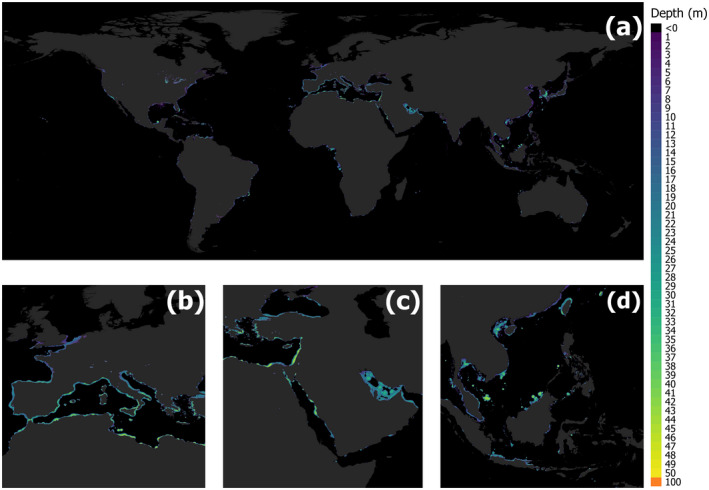FIGURE 1.

The depth of biologically important artificial light at night (ALAN) (Zc): around the world's coastlines (a); in the Mediterranean and Northeast Atlantic (b); in the Black Sea, the Red Sea and the Persian Gulf (c); and in the Gulf of Thailand, Andaman Sea, South China Sea and the Java Sea (d). The legend inset details the depths (m) to which biologically important ALAN penetrates the sea. The data is derived from the relationship between The New World Atlas of Artificial Night Sky Brightness (Falchi et al., 2016) and sea surface irradiances (Davies et al., 2020), coupled with the monthly climatologies of globally inherent optical water properties and validated against in situ data collected from the Persian Gulf (Tamir et al., 2017). “Biologically important ALAN” is defined as the minimum irradiances of white light that elicit diel vertical migration in female Calanus copepods (Båtnes et al., 2013) [see Smyth et al., 2021 for further details]. Maps are representative of average ALAN penetration over a typical year. Full dataset is available to download from https://doi.pangaea.de/10.1594/PANGAEA.929749.
